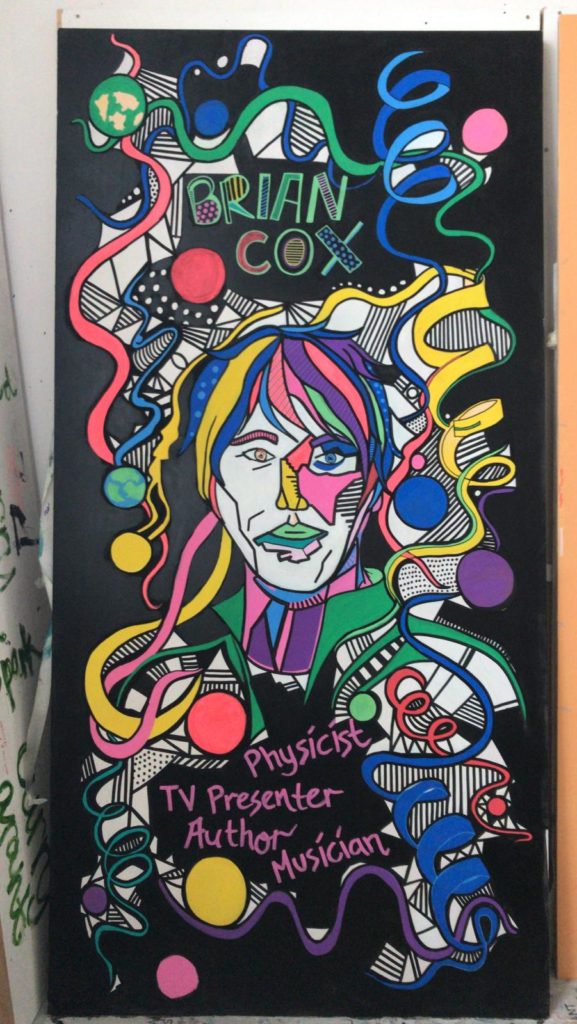Manchester's Hidden Stories - Spectacular Scientists
Next up in Meha’s #MCRHiddenStories mural in collaboration with NOMA Manchester and The Old Bank Residency are a series of boards exploring the stories of inspiring scientist’s.
Read on to find out more about Balloonist James Sadler, Physicist Professor Brian Cox, and Botanist Kathleen Drew-Baker.

James Sadler
A pastry chef from Oxford, James Sadler was a celebrity of 1780’s Britain, after he became the first ever Englishman to fly. Inspired by Joseph and Etienne Mongolfier, the French brothers who first conquered flight, Sadler began experimenting with gas filled balloons and made his first flight in 1784. At a time when knowledge about our skies was lacking, people were concerned that Sadler may collide with Heaven, or be attacked by ‘sky dragons’. Thankfully this didn’t happen and he took off from Oxford, flying for 30 minutes, and covering six miles before landing in Wood Eaton. Following his first flight, Sadler became a huge celebrity, with memorabilia from drawer knobs to bidet’s featuring his image. He became so famous in fact, that he, and three of his balloon’s, were given top billing at the 1814 jubilee at the personal request of the Royal family. So, what connects Sadler to Manchester? Two of Sadler’s further attempts at balloon flight took off in the city, with the first, from the garden of one John Howarth, in Long Millgate, watched by a crowd of over 5,000 people. The flight was a success and saw Sadler, with a cat for company, flying seven miles north to Radcliffe where he promptly landed in a reed bed. Named after Sadler, you’ll find Manchester’s newest public square, Sadler’s Yard in the cities Northern Quarter as part of the NOMA Manchester neighbourhood.Brian Cox
Known for revitilising the British public’s interest in Physics, Professor Brian Cox credits his love of the subject to Carl Sagan’s book ‘Cosmos’. Born in Oldham in 1968, Cox’s early years were spent dreaming of space travel, before his passion turned to music in his teens and saw him join a local band, Dare, as a keyboardist. He recorded music and toured with Dare in the late eighties returning to his love for Astronomy when the band split in 1991, completing a degree in Physics at the University of Manchester, followed by a PhD in particle physics. Prior to his PhD, Cox was again a keyboardist for another music group, D:Ream, best known for their 1994 hit, ‘Things Can Only Get Better’. Confronted with the choice of going on an international tour with the band or staying in Manchester to finish his PhD, Cox decided to stick to his first love, completing his doctorate with a thesis titled, ‘Double Diffraction Dissociation at Large Momentum Transfer.’ In 2005, he began working as a professor of particle physics at the University of Manchester and made his television presenting debut hosting episodes of BBC One’s Horizon programme, looking at topics such as ‘Can We Make A Star on Earth?’. Following this he presented a one-off show, The Big Bang Machine, which resulted in him being offered his own series, Wonders Of The Solar System. Since then, Cox has hosted numerous science based shows including Stargazing: Live, Forces of Nature, and The Science of Doctor Who. He has also co-authored and written a number of books including, ‘Why Does E=mc2?’. Cox currently works on the ATLAS experiment, one of four major experiments at the Large Hadron Collider, requiring him to spend time at CERN in Switzerland.



